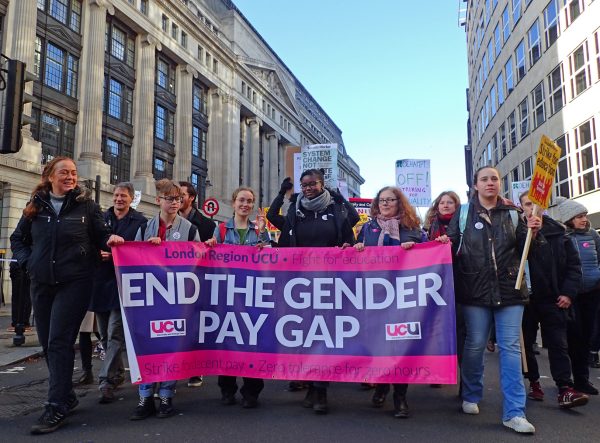Since the second half of the 20th century, the number of women in the workforce has grown significantly. Women are now working long hours and pursuing higher education. Recent research shows that even though the number of women entering professional schools is nearly equal to men, women are still less likely to reach the highest echelons of their professions.
Despite the progress in more women entering the workforce and pursuing education, there are significant wage gaps between men and women, especially for women of color. What is the gender wage gap? What does it mean when people say: “Women earn 82 cents for every dollar a man earns”? What is the cause behind the gender wage gap? And what can we do to end it?
What is the Gender Wage Gap?

Photo: Flickr
“The gender wage gap is the difference in earnings between women and men.” It is an example of gender inequality that women faced. Not only do women earn less than men in nearly all occupations, but women also earn less than their same race and ethnicity counterpart at every level of educational attainment.
Key Factors that Contribute to the Gender Wage Gap
- Women often faced job segregation due to gender stereotypes about women’s capabilities and skills.
- There is conscious and unconscious discrimination and bias in hiring and pay decisions.
- Women faced an unequal share of paid and unpaid work. Women work longer hours than men, and they also spend more hours on unpaid caring and domestic work. This may affect women’s career choices.
- Women’s disproportionate share of unpaid caring and domestic work.
- There is a lack of flexible working to accommodate caring and other responsibilities for women have.
- Women and men work in different fields and jobs, female-dominated industries and jobs pay less. These jobs include cleaning, catering, admin, care, and retail.
Effective Actions to Close the Gender Wage Gap
The United Kingdom government has identified 6 effective actions companies and employers can take to close the gender wage gap:
- Include multiple women in shortlists for recruitment and promotions
-
Use skill-based assessment tasks in recruitment
-
Use structured interviews for recruitment and promotions
-
Encourage salary negotiation by showing salary ranges
-
Introduce transparency to promotion, pay, and reward processes
-
Appoint diversity managers and/or diversity task forces
– Wanwarin Yensuk
_________________________________________________________
‘Want to stay up-to-date? Follow us on Facebook, Instagram and Twitter
Interested in volunteering with CFG? Let us know
Not able to come to join us in Thailand yet? Consider donating
Not able to donate today? Look for opportunities in your community to work against gender-based violence and human trafficking, as these are universal issues.
